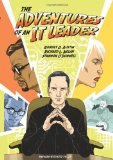I write frequently, and not without some exasperation, about the perennial search for the “silver bullet” in IT: the holy grail, the end-all, be-all solution to preventing IT failure.
The silver bullet has a very close and similarly pernicious internal twin cousin: the One True Way. That’s a technique or practice that is (usually) adopted by its IT aficionados as the key to overall success, with the important insistence that it will work as long as you follow it to the letter, in all cases, no matter what.
So this post will seemingly be about a specific (and low-level) development issue, but it’s only to serve as an example to illustrate this One True Way syndrome that is so prevalent in IT. At core, my takeaway boils down to the same old message I usually have when it comes to IT matters: be wary of something promising to fix all your problems. Be wary of absolutes. And be especially wary of the combination.

